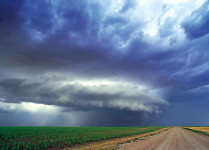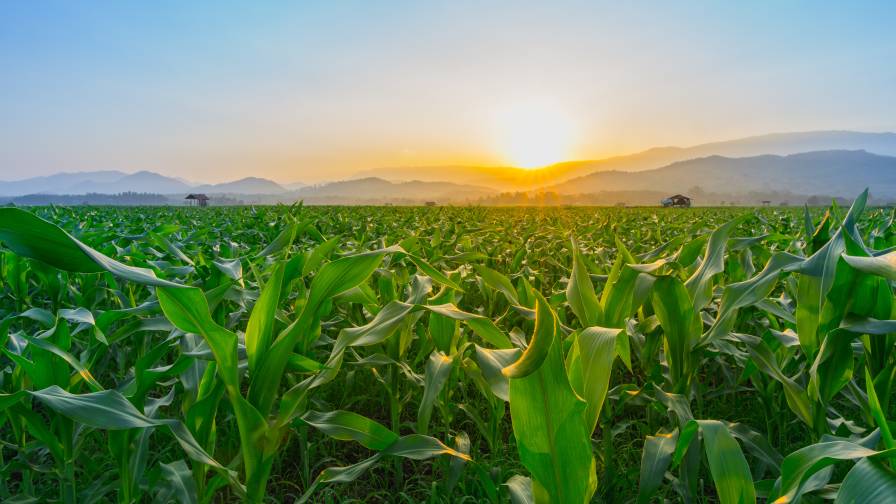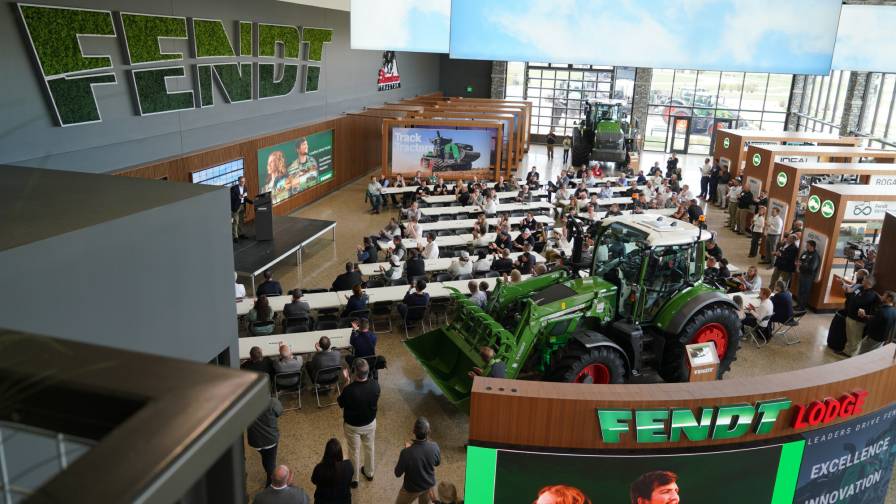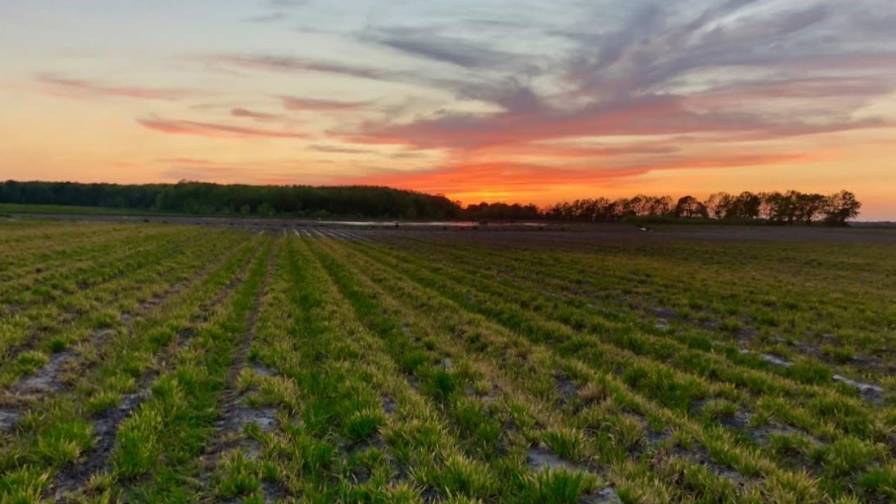Agriculture Faces The ‘Perfect Storm’

Today, most everyone that is directly or indirectly tied to the commodity grain side of U.S. agriculture is smiling all the way to the bank. Most Midwest farmers are seeing their profits dramatically increase to record levels, as a surge in prices has outpaced higher costs, and the equity on their balance sheets is exploding on the upside, due to the dramatic appreciation in farmland values.
Investors, who have recently discovered the attractiveness of financial investments in farmland and related ag assets, feel validated in moving into an unconventional investment area, agriculture, given the turmoil in financial markets and the unprecedented economic uncertainties facing the global economy.
Farmers’ optimism and profit bonanza has been a dramatic revenue and profit booster for downstream suppliers, including basic suppliers and the distribution chain for inputs (fertilizer, crop protection chemicals, and seeds), farm machinery, and farm technology/service providers.
The major questions facing agriculture, especially the commodity grain side of Midwest agriculture, are twofold:
1. Is Midwest agriculture at a peak, or very near a peak, in terms of crop prices (focusing on corn), profits, and farmland values?
Our answer, discussed in the first and second article of this series in the September and October 2011 issues of Crop Life magazine clearly suggests that agriculture is facing Ag Bubble 2.0, reflecting “irrational exuberance”, not a “new normal”, which will result in a traumatic downward cycle.
2. What are the risk/reward parameters of current Ag Bubble 2.0, in terms of crop prices, profitability, and farmland values?
It is our view that Midwest agriculture is at or near a peak and that the downside risks in the short- to – intermediate term (next 2-3 years) are sizable. Furthermore, agriculture faces a “perfect storm”, which could extend the downside risk in farmland, beyond the next few years.
Reversal In Fortunes
At or near a peak, Midwest agriculture faces a dramatic reversal of fortunes over the next 2-3 years. Given the broad diversity in agriculture from a crop, level of productivity in terms of yields, as well as regional perspective, our discussion and analysis will focus on Midwest agriculture and high productivity corn acreage (180-200 bu/acre), such as in Iowa and Illinois.
As discussed in the second article in this series (State Of Agriculture: Irrational Exuberance Or The New Normal?), Ag Bubble 2.0 has been largely driven by short-term supply dislocations. For example, adverse planting and growing conditions have resulted in back-to-back corn production shortfalls in the U.S. in 2010 and 2011, and near-record low U.S. corn stocks. Record corn prices has rationed demand and creates the incentive for record or near-record U.S. planted acreage, as well as a strong global supply response, in the 2012 planting season. A rebound of the global supply side is the catalyst for a major trend reversal in crop prices and the risk of a dramatic plunge in per acre profits for the 2012 corn crop, from record levels expected this year.
• Crop Prices – Downside Risk to Corn Prices of $4.25-$5.25 Per Bushel from Current $6-7 Levels. Corn prices could strengthen once again over the next 6-8 months and challenge the previous peak of close to $8.00 per bushel in order to provide the incentive to expand corn acreage in the “battle for acres” in 2012, as well as continue to ration current short 2011 production. Should U.S. farmers plant 93+ million acres of corn, ending stock would dramatically rebound. Our estimate of the downside risk to corn prices is $4.25-5.25 per bushel range over the next two years. While weather is a wild card for 2012 corn production, since La Nina conditions have once again resurfaced, should production be negatively impacted, the inevitable decline in corn prices would only be delayed a year until 2013.
• Crop Profitability – Downside Risk of 30-50% from Forecasted Record Level of $660 Per Acre This Year. Farm profits are expected to reach a record level in 2011, which might set a high water mark for a number of years. Corn profits/acre (excluding farmland costs) are forecasted to surge to a mega-profit level of $660 for the 2011 crop, which is a dramatic increase from the estimated previous peak of $420 for the 2007 crop. Despite higher input and machinery costs, the dramatic expansion in margins reflects the simple fact that corn prices have dramatically escalated above cost increases. Unfortunately, an expected reversal in corn prices, at the same time that costs are expected to continue to escalate in 2012, are forecast to result in a dramatic squeeze in profits (excluding farmland costs) to the $300-400/acre level over the next two years. However, given the expected continued volatility in prices, we would expect the most productive and astute marketers to demonstrate farm profits above these levels.
• Farmland Values – Downside Risk of 20-40% from Current Levels Over the Intermediate Term. Given the dramatic escalation in farmland values since 2005, especially over the last two years, farmland values are vulnerable. Downward pressure on prices and profits expected for 2012 will act as a catalyst for building downward pressure on farmland prices in 2012. The combination of dramatically lower crop prices and profits, and an expected rise in interest rates from current abnormally low levels, create the catalyst for a dramatic reversal in farmland prices over the next 2-3 years, which will be discussed in the following section. Our analysis suggests that farmland values (high productivity corn acreage), conservatively, has 20-40% downside risk from current levels.
Facing The “Perfect Storm”
Farmland values reflect the health of U.S. agriculture. Farmers in the Midwest, flush with cash from last year’s crop, as well as anticipating record mega-profits this year, continue to bid up farmland prices. Farmers have well recognized that farmland investments over the last 25+ years have proven to be a sure bet, in terms of appreciation. While farmland transactions at $8,000+ per acre have been common, average farmland values in Iowa have increased 8.6%/year from $787/acre in 1986 to an estimated $6,250/acre in 2011, with only 2 years that did not see year-to-year price gains. On a similar basis, even more noteworthy, is an estimated annual average increase of 13.6% over 2005-2011, with estimated 19.6%/year gains just over the last two years (2009-2011).
Despite the long-term escalation in Midwest farmland values, there is a growing probability that values are reaching a strategic point of inflection and will be subject to growing downward near-term pressure and significant intermediate- and long-term downside risk. Continued farmland purchases by optimistic farmers, with excess cash, could continue to levitate farmland values, in the face of an expected dramatic decline in crop prices and profits over the near-term. However, at some point, even the most optimistic farmers will be forced to capitulate. Looking back in history, many farmers who paid record prices of $4,000+/acre in the late 1970’s look smart today, but were burdened by underwater investments for 25+ years, until 2005-2006.
Agriculture faces a “Perfect Storm” in terms of a secular reversal in the key drivers of farmland values.
The fundamental drivers of the value of any capital asset, such as farmland, are future earnings expectations and the discount rate, or cost of capital, which are used to discount future earnings. The dramatic surge in farmland values over the past 6 years has been driven by the dramatic rise in crop prices and profits, at the same time that interest rates have fallen to record lows, as evidence by the current 2.0% interest rate level for 10 year U.S. treasury bonds (risk free rate). Based on our view that crop prices and profits are at, or near a peak, in 2011-2012, a key reversal of the three key value drivers, especially a long-term secular uptrend in interest rates from current abnormal low level (due to Federal Reserve policy actions to stimulate the economy), will put significant downward pressure on farmland values over the intermediate-to long-term.
Farmland Value And Interest Rates
Interest rates play a major role in farmland values, since they are a key determinant of the cost of capital, used in the valuation process. The downward trend in long-term interest rates since the mid-1980’s has been a key value driver that has supported the steady rise in farmland values, especially during the last 4-5 years.
While one can argue that current abnormally low interest rates will remain low over the next 12-18 months, it is only a matter of time until interest rates start to rise to more normal levels (4-5% interest rate for 10 year U.S. treasury bonds). The “bond vigilantes”, or the bond market, will start to increase interest rates, apart from U.S. Federal Reserve policy actions, once economic activity start to strengthen, in concert with an expected rise in inflation from current levels, which even under conservative assumptions, can be expected to start to develop in the next two years.
We will discuss in detail, the alternative methods of valuing farmland and the basis for our forecasts for significant downside risks in Midwest farmland values in the next article in this series, expected to be published in the December 2011 issue of Crop Life magazine.
What Could Change?
Forecasts, especially short-term ones, in agriculture always carry risks, since many key variables are outside agriculture’s control, such as adverse weather which can impact production. There are a number of “wild cards” that could impact our forecasts, apart from serious economic concerns over the risk of a double-dip recession in the U.S. and Europe in 2012, as well as a dramatic economic slowdown in developing countries.
The key “wild card” that could delay the timing of when Ag Bubble 2.0 deflates, is a repeat of a La Nina weather pattern in 2012 that depresses production levels, It is important to note that back-to-back La Nina conditions does not guarantee lower yields and production in the second year. However, should La Nina conditions in 2012 create a replay of 2011, which would reinforce current high prices/profits/farmland values for another year, we would expect the vengeance of the supply side of Economics 101 will be delayed one year.
Importantly, forecasting is hazardous, especially when you take a position that is diametrically opposed to the consensus. However, there are unique times, such as today, that an emphasis on anticipating strategic “points of inflection” and fundamental changes in the direction of key market drivers, provides opportunities to limit risk and take advantage of the downside, when market conditions ultimately bottom.





